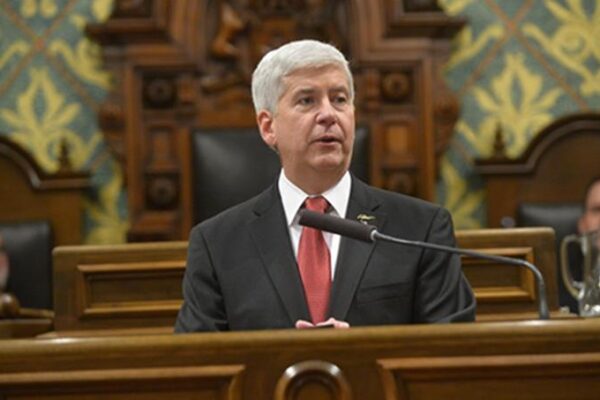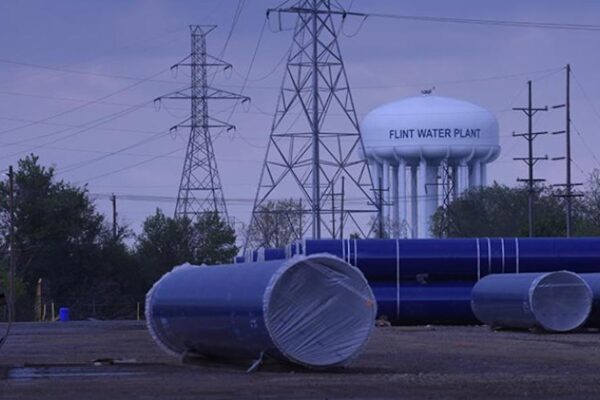What we have come to learn about the Flint water crisis over the past several months—including the fact that a city of 100,000 people was left exposed to alarming levels of lead in its drinking water for nearly two years—has left our state reeling and our nation angry in disbelief.
But even more so, we—here at the ACLU of Michigan's Democracy Watch blog—aren’t just outraged by what we’ve uncovered through our investigations. We’re outraged by what we don’t yet know.
As a result, we are eagerly awaiting Gov. Rick Snyder’s sworn testimony before the House Oversight Committee on Thursday, March 17, 2016. While many are expecting the GOP-led Congress to use Snyder’s testimony to play up the federal government’s failures in the Flint water crisis, those who’ve watched the governor dole out blame to a variety of culprits are far more interested in answers to a few particularly nagging questions about what role Snyder and his office may have played in the catastrophe.
Although the governor’s office hasn’t yet shed any light on its place in the Flint mess, it’s our hope that, with Snyder under oath next week, he can finally get around to explaining a few things that his office hasn’t been quite so forthcoming about. To wit:
- Why didn’t Snyder’s office act more aggressively to safeguard the water when studies showed the presence of carcinogens and E. coli in the water and there were reports linking a deadly Legionnaires’ outbreak to the river water?
- Was Snyder’s office directly involved in the catastrophic decision to begin using the Flint River as a municipal water source in April 2014?
- Was the governor himself in the loop?
- How does Snyder square a Feb. 2015 email from him asking about “Flint water” with his claim that he knew nothing about the water troubles until September 2015?
All are questions that deserve answers—and Snyder needs to answer them.
Watch the new ACLU documentary "Here's To Flint."
Certainly, there is ample cause to raise such queries.
Consider, for instance, that in a September 2015 interview with the ACLU of Michigan, Howard Croft, then director of public works for the City of Flint, asserted that the “governor’s office” made the final call to begin using the river rather than continue on the Detroit system while the new Karegondi pipeline is being constructed.
Asked about that claim last October, then-Snyder spokeswoman Sara Wurfel said she couldn’t respond to the question because, essentially, there was no choice to be made. Wurfel tried providing cover for the governor by falsely claiming that the decision to use the river was forced when Flint was kicked off of the Detroit system, leaving the river as the only available option.
We’ve known for some time that’s simply not true. Detroit did, as is frequently pointed out, terminate a long-term contract after the decision was made to use the Karegondi Water Authority as Flint’s long-term water source. But, as we first reported last year, Detroit very much wanted to keep selling Flint water until the pipeline was completed.
That should not even be a matter of debate at this point. A letter we obtained through the Freedom of Information Act proves that in March 2014 emergency manager Darnell Earley flat-out rejected an offer from Detroit that would have kept clean, safe water flowing into the city.
Instead, in an ill-fated attempt to save $5 million, the decision was made to switch to the river, a move that resulted in the lead contamination of Flint’s water supply.
A recent Washington Post story about the decision included a document showing that, in June 2013, Flint Public Works Director Croft and then-Utilities Director Daugherty A. Johnson III recommended approval of a resolution “authorizing the City of Flint to enter into a sole source contract with Lockwood, Andrews & Newnam (cq) for professional engineering services to place the Flint Water Plant into operation using the Flint River as a primary drinking water source.”
It is possible apologists for the government would somehow try to twist that into proof that it was really the “city” that wanted to use river water. First off, although they may have technically been employees of the city, Croft and Johnson were on the payroll because the governor’s emergency manager wanted them there. Unelected emergency managers began calling the shots in flint in 2011, and kept doing so until April of 2015. Moreover, for the resolution to take effect, the emergency manager needed to sign off on it.
So, no matter how dense the smoke is that some continue trying to blow, it was the state and the state alone that made the disastrous decision to use the highly corrosive river—a mistake compounded by the fact that the state, inexplicably, also decided not to use mandatory corrosion control chemicals. It is also the state—through the actions of emergency manager Jerry Ambrose—that refused to let Flint return to the Detroit system in March 2015. That’s when Ambrose overruled a city council vote to return to Detroit’s system, saying that the river water was safe and, besides, the city couldn’t afford to provide residents with the clean water coming from Detroit.
So residents were forced to continue using what proved to be lead-contaminated water for another seven months, and are still struggling with the fallout from infrastructure damaged by the corrosive river water.
Read more about the Flint water crisis.
The Washington Post piece mentioned above involved the fact-checking of Democratic presidential candidate Hillary Clinton’s claim that Flint’s “children were poisoned by toxic water because their governor wanted to save a little money.”
Snyder’s new director of communications, Ari Adler, disputed that claim, telling the Post: “This was never about money, so Hillary Clinton’s claim is bogus. This was a failure of government at all levels that could be described as a massive error of bureaucracy.”
Adler added: “The decision to move to the Flint River as the primary temporary water source was not made at the direction of the governor’s office.”
Now Snyder could have the opportunity to answer that question himself, while under oath.
As we saw in the governor’s State of the State speech—where he presented a “comprehensive” timeline that omitted Earley’s rejection of Flint’s offer—Snyder is clearly unwilling to take ownership of the cause of the crisis. He blames career bureaucrats at the Michigan Department of Environmental Quality for not sounding an alarm and oversight failure on the part of the U.S. Environmental Protection Agency.
We’ve also have heard the governor repeatedly apologize to the people of Flint. But finger-pointing and contrition fall short. What we need are direct answers to some very direct and very serious questions.
p.p1 {margin: 0.0px 0.0px 0.0px 0.0px; font: 12.0px 'Helvetica Neue'; color: #454545}
"So, no matter how dense the smoke is that some continue trying to blow, it was the state and the state alone that made the disastrous decision to use the highly corrosive river—a mistake compounded by the fact that the state, inexplicably, also decided not to use mandatory corrosion control chemicals."




